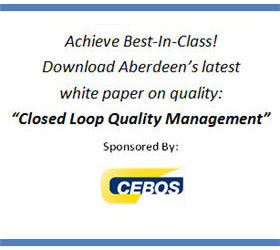Body
When the data come along one value at a time, we tend to put them on a chart for individual values (an XmR chart). Since virtually all business and managerial data occur one value at a time, the primary chart for service-sector data is the XmR chart. Yet the original process behavior chart was the average and range chart (also known as an X-bar and R chart). The advantages, restrictions, and issues surrounding average and range charts are the topics of this article.
…
Want to continue?
Log in or create a FREE account.
By logging in you agree to receive communication from Quality Digest.
Privacy Policy.

Comments
Getting Service Employees to Use Control Charts
Donald is correct. My observation, however, is that few service employees use any form of a control chart. Having attended many Institute for Healthcare Improvement and National Association of Healthcare Quality conferences and looked at hundreds of improvement posters, virtually all still use a bar chart for time series data.
First, let's get people using control charts, even if it's an XmR used when it isn't the best choice, then let's get them to understand rational subgrouping. With the Excel-based SPC software available today, there's no excuse for using bar charts when control charts are so readily available.
Quick trick for assessing
Good article. A quick “trick” to help identify the warnings that Wheeler gives about incorrect subgrouping is to look at the range chart. For subgroup sizes less than 7, in theory it is likely that if you have rational subgroups you can have a subgroup range of 0 from time to time. Even though there might not be a 0 on the R chart, you can expect that it is possible to see a 0 from time to time over the long haul. In both examples provided, Figures 4 and 8 show ranges that look more like Xbar charts – distributed consistently above and below Rbar, but more importantly no range values remotely close to 0. That alone should be a strong indicator that the subgrouping is not so rational.
SO, WHY IS SO IMPORTANT?
Why is subgrouping used, taught and learned in almost all books & seminars? The article tells us when not to use it, but how to know when we must use it?
Add new comment